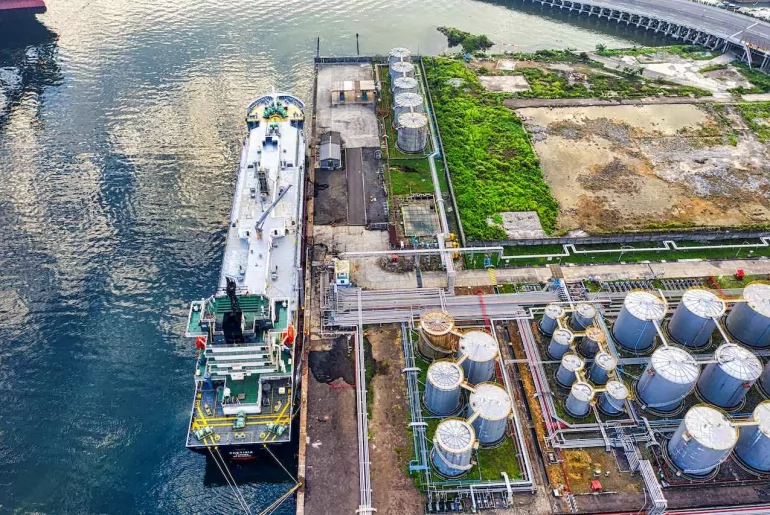In the oil and gas industry, ensuring the safe and reliable operation of equipment is critical. Equipment can degrade due to various factors such as corrosion, cracking, and other damage mechanisms. Fitness-For-Service (FFS) is a crucial approach used to evaluate the structural integrity and remaining service life of equipment, allowing informed decisions on its continued operation.
API 579 has become a known standard regarding Fitness-For-Service procedures. In this article, we will guide you through the definition, scope, and limitations, as well as the step-by-step procedures of API 579.
What Is API 579 – Fitness For Service?
Developed by the American Petroleum Institute, API 579 is a well-known industry standard that offers guidelines for inspecting, repairing, and evaluating the fitness-for-service of equipment and piping used in the oil and gas sector.
The focus of API 579 is on determining the integrity and remaining lifespan of pressure vessels, piping systems, tanks, and other equipment that may have experienced degradation, deterioration, or any kind of damage during their operational life.
API 579 is predominantly designed to evaluate equipment and piping exposed to pressure, temperature, and other mechanical loads in specific industries such as petroleum, chemical, petrochemical, and power. This standard encompasses various types of equipment, including pressure vessels, process piping, storage tanks, and related components.
What Is The Scope of API 579 – Fitness For Service?
According to API 579 – 2016 edition, the techniques and procedures are intended to complement and augment the requirement of API 510, API 570, API 653, and other post-construction codes that reference FFS evaluations, such as NB23.
Moreover, the evaluation methods outlined in API 579 can be applied to conduct Fitness-For-Service assessments and rerating of equipment that has been designed and constructed by the following construction codes:
- ASME B&PV Code, Section VIII, Division 1
- ASME B&PV Code, Section VIII, Division 2
- ASME B&PV Code, Section I
- ASME B31.1 Piping Code
- ASME B31.3 Piping Code
- ASME B31.4 Piping Code
- ASME B31.8 Piping Code
- ASME B31.12 Piping Code
- API Std 650
- API Std 620
- API Std 530
What Is The Limitation of API 579 – Fitness For Service?
As for the limitations of API 579 – Fitness for Service, some are:
1. Applicability
The standard covers the evaluation of the in-service equipment but not for designing new or pre-service equipment.
2. Material and Equipment Types
API 579 covers a wide range of equipment types but does not apply to all materials and equipment used in various industries. It covers the equipment used for the oil and gas sector.
3. Subjectivity
The evaluation procedures and criteria could result in variability in assessment results depending on the experience and expertise of the evaluator.
4. Limitations of Analysis Method
The standard gives guidelines for several analytical methods with limitations and uncertainties, such as models used in the analysis, assumptions, and input data accuracy that may become obstacles in generating accurate results.
How Is The Assessment Method of API 579 – Fitness For Service?
The assessment process typically involves several steps. Outlined from API 579 2016 edition, the standard procedures for conducting a Fitness-for-Service (FFS) assessment for all types of flaws and damage mechanisms are as follows.
1. Flaw and Damage Mechanism Identification
The identification process can refer to the original design and fabrication practices, the material of construction, and the service history and environmental conditions.
2. Applicability and Limitations of the FFS Assessment Procedures
Each section of the assessment procedure outlines its applicability and limitations, providing information on whether to proceed with the assessment or not.
3. Data Requirements
Data needed for the assessment may relate to original equipment design data, information pertaining to maintenance and operational history, expected future service, and data specific as well as specific data related to the FFS assessment, such as flaw size, stress state at the flaw location, and material properties.
4. Assessment Techniques and Acceptance Criteria
Each section of the assessment procedure includes techniques and criteria for evaluating the component. If multiple damage mechanisms occur, it may be necessary to refer to more than one part for the evaluation.
5. Remaining Life Evaluation
To establish an inspection frequency, the inspector can perform a remaining life evaluation. This calculation is based on FFS assessment procedures with future damage estimation.
6. Remediation
API 579 inspector may need to do remediation techniques to control future damage related to material deterioration or flaw growth.
7. In-Service Monitoring
Various techniques for monitoring equipment or systems during operation are outlined in each Part, depending on the specific damage mechanism or type of flaw.
8. Documentation
The documentation should contain a complete record of all information and decisions made during the previous steps to determine the component’s eligibility for ongoing operation.
Due to its complex assessment procedures, it is important for pressure vessel/piping/tank design engineers, process engineers, plant managers, and chemical or mechanical engineers who are involved in the integrity assessment of column, vessels, tanks, and piping to master the Fitness-For-Service understanding.
Fitness-For-Service (FFS) assessments are engineering evaluations used to quantitatively assess the structural integrity of a component in service that may have flaws or damage. API 579 Fitness For Service training course by PetroSync provides a detailed discussion of FFS concepts, focusing on degradation mechanisms and their consequences. The course also covers the application of material science, stress analysis, non-destructive testing (NDT), and inspection practices to assess the current structural integrity and remaining life of a component.
Analytical methods, including their practical applications, are explained using case studies. We design our course to be accessible to participants with or without a background in FFS, using clear explanations of technical terms, code statements, and examples to clarify concepts. Wait no more, master the concepts and technical terms of fitness for service by joining PetroSync‘s API 579 training today!
Credit header image: Freepik.com

SEO specialist by day, fact-checker by night. An avid reader and content writer dedicated to delivering accurate and engaging articles through research and credible sources.







